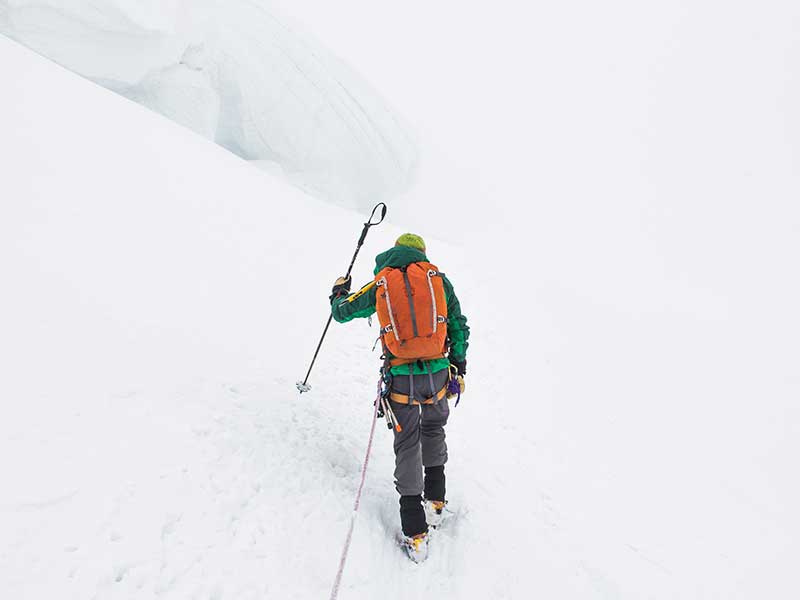Climbing with crampons: 4 essential techniques for every mountaineer

Progression with crampons (read our guide to choosing the right crampons for your activity) is an essential technique if you are hiking in snowy or icy mountains. A correct technique will allow you to move comfortably, without putting unnecessary stress on your joints and maintaining your stability. And don't forget that your safety in the mountains depends on good technique.
To begin with, the crampons should always be accompanied by an ice axeThis is because any mountaineer not only needs their feet to stick perfectly to the ground but also needs the rest of their body to be secure and for this the ice axe is fundamental. This accessory will allow you to use your arms to support you when the slope is very steep so that you can defend yourself better on the terrain. Not forgetting its use in the technique of self-detection if you have slipped on an icy slope.
French technique
With this technique of progression with crampons, it is sought that all the tips of the crampon touch the ground and that lines are drawn with the feet. It is also very important that the mountaineer avoids stepping across the feet so that the body maintains good balance and there is less risk of a fall or other type of accident.
In the same way, the French technique aims to facilitate the ascent and descent of slopes, reducing the effort and fatigue of the legs and feet when walking. This means that with this technique the mountaineer will be able to keep a good pace and at the same time maintain sufficient energy to successfully complete the route.
To move downhill using this technique, you need to spread your legs apart and bend your knees, so that your centre of gravity is then between your feet.
The French technique is commonly used for ascending or descending on gentle slopesThe ankle flexibility allows us to rest the whole sole of the foot on the ground.
Duck technique
This technique is often used on slopes starting at a gentle level and ending at a medium to moderate level. In this case, you only need to open your feet a little at an angle, separating your heels and bending your legs a little. The steps should be short and progress slowly to avoid falling.
On the other hand, it is important to keep in mind that when you have your feet at an angle, you must be very careful to avoid rubbing your heels together, as this could easily lead to a fall. Therefore, it is also very important that you do not rush and that you always make sure that your feet are in the correct position.
Although it may not seem necessary to say it, in this technique of progression with crampons you should carry the ice axe in the form of a pole, in case you require additional support for the ascent of the mountain.
Technique on front tips
This technique of progression with crampons is applied on vertical slopes on very hard snow, where the whole foot cannot be supported. Likewise, the ice axe should be used as a support to make it easier to move forward and to avoid losing stability when moving. In this case, it is also advisable to go slowly and concentrate on your movements so that they are correct and you can climb the slope without any problems.
Mixed media
In this technique, the aim is to combine the French style with the ascent on tiptoe so that the feet and legs do not get too tired. The idea is that with one foot you step with the tip of the crampon in the snow and with the other foot you step with the whole foot..
The techniques are then alternated so that the muscles can relax a little, and also so that the feet do not remain in the same position for too long and do not tire so quickly. The mixed technique of progression with crampons is usually used on moderate slopes where the ground has good stability.
Don't miss any adventure in the Pyrenees!
